Find the best inverter for your solar system
- Details
- Hits: 6266
A pair of PV Inverters for Home is crucial to your performance Photovoltaic system: It converts direct current to alternating current so you can use the energy. But which inverter suits your system best? In this article you will learn how inverters work, what they have to do and how to choose the optimal model for your specific needs. We will also introduce you to new developments.
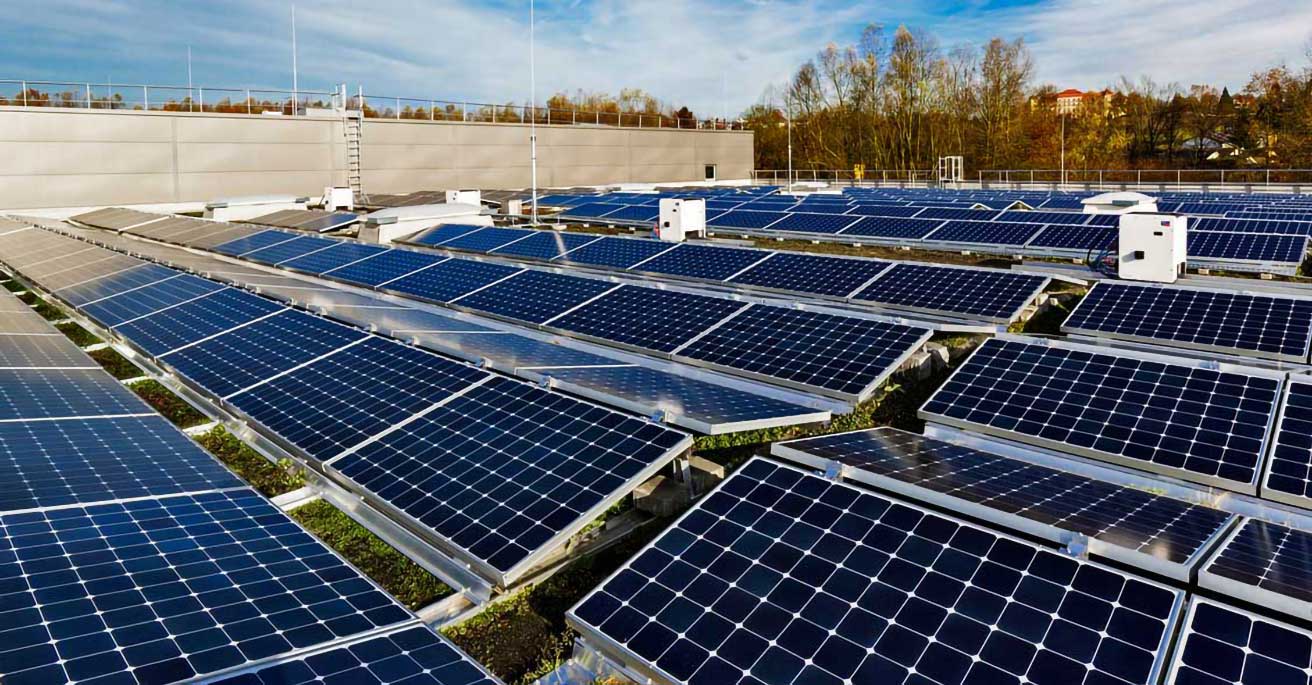
Contents
- Inverter 2024 – The most important things at a glance
- Inverter innovations
- Basics of inverter technology
- Different types of solar inverters
- Selection criteria for the right PV inverter
- Integration into the smart home
- Emergency power capability and island operation
- The leading manufacturers at a glance
- Financial aspects when purchasing an inverter
- Frequently asked questions
Inverter 2024 – The most important things at a glance
Convert inverter Direct current to alternating current to control and monitor the solar system, optimize energy production through MPP tracking and have efficiencies of up to 98%.
There are different Inverter types such as string, multistring, hybrid and micro inverters, each of which is designed for different solar system sizes and sometimes also for special requirements such as shading or different orientations.
The selection The right inverter depends on several criteria, including power class, nominal power, efficiency, MPP tracking capability, type of grid connection and integration into smart home systems. Maintenance and longevity as well as financial considerations should also be considered.
Inverter innovations
Below we will introduce you to the new developments in the area of inverters:
Three-phase backup power solution with inverter and battery
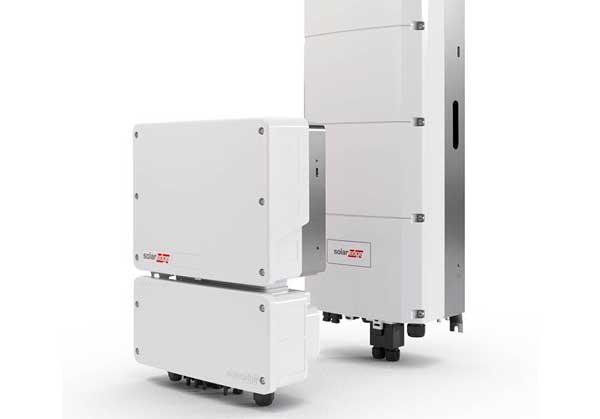 18.02.2024 | Solaredge is launching an innovative three-phase backup solution in Germany to guarantee homes an uninterrupted energy supply during power outages. This energy-efficient innovation is based on the three-phase Home Hub inverter and the 48 V Home battery.
18.02.2024 | Solaredge is launching an innovative three-phase backup solution in Germany to guarantee homes an uninterrupted energy supply during power outages. This energy-efficient innovation is based on the three-phase Home Hub inverter and the 48 V Home battery.
The backup power solution was developed to meet the increasing interest in Self-sufficiency and Grid independence to do justice. It offers a backup capacity of up to 23 kWh and an output of up to 10 kW. Its DC-coupled architecture achieves 94,5% efficiency and allows for 200% DC oversizing, optimizing self-consumption.
The facility is also Black start capable, which enables automatic restart after discharge. Integrated networking minimizes the installation effort. Available to installers nationwide, this system is an important part of the Solaredge Home System, which includes solar energy generation, battery storage and intelligent Energy Managementsolutions combined to achieve maximum energy efficiency.
Inverter for balconies and larger systems
02.12.2023 | growatt presented on the Solar Solutions in Düsseldorf its latest inverters, including the MAX 100-125KTL3-X LV. This inverter is certified according to VDE AR-N 4110:2023 and therefore qualifies for the unit certificate for medium-voltage generation systems.
A highlight are the for Balcony-Solar systems optimized NEO 800M-X micro inverter. There are also the Battery Ready solutions, consisting of the MID 11-30KTL3-XH inverter and the compatible APX HV Battery for maximum energy efficiency.
The WIT 50-100K-HU hybrid inverter was designed for larger photovoltaic systems over 50 kW designed and comes with battery storage options. It is supported by the powerful energy storage solution APX Commercial Battery.
Solar inverter with integrated yield optimization
April 27.04.2020, XNUMX | Before installing a solar system, the shading raises the question of a module optimizer or a PV inverter with integrated yield optimization. The University of Southern Denmark (SDU) knows according to the SMA SolarTechnology the answer. A study shows that a photovoltaic system with a modern string inverter achieves higher yields in almost all applications than a traditional module optimizer. The smaller number of electrical components in the photovoltaic system also reduces the susceptibility to errors.
“When developing our inverters, we rely on fully integrated functions right from the start. SMA Shadefix is digital, integrated software that holistically optimizes the energy yield of photovoltaic systems. “It outperforms conventional hardware for yield optimization of PV systems,” says Nick Morbach, Executive Vice President Business Unit Home and Business Solutions at SMA.
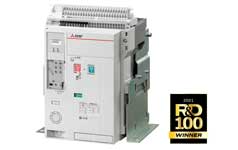 Air circuit breaker, digital protection relay and soft starter
Air circuit breaker, digital protection relay and soft starter
“The SDU study demonstrably proves that we are right. Our inverters have all the functions that users need and thus ensure maximum yields in their solar systems. Additional components are not required even with shaded modules. This reduces the number of used electronic components compared to a system with module optimizers Factor 30. This has an extremely positive effect both on the reliability and safety of the PV system and on the environment. ”
String inverter for optimizing the yield of the PV modules
SMA String inverter are designed to offer highly efficient yield optimization. SMA has further developed MPP tracking for this. This is based on the optimum performance of the PV module. Using the SMA Shadefix software, the global maximum power of each PV module string can be found safely. In this way, the available energy of the modules can be used in the best possible way.
"Only in Solar systems with strong shading, better values could be achieved with the selective use of solar module optimizers than with the use of an inverter, ”says Assoc. Prof. Dr. W. Toke Franke from the SDU. However, the susceptibility to errors increases in photovoltaic systems with solar module optimizers. More components in the system required more Connectors and therefore pose a higher risk of system failures or fires in the photovoltaic systems. Overall, the study “The Impact of Optimizers for PV Modules” contradicts the general statements about additional energy yields through the use of optimizers in the photovoltaic system. It shows very few scenarios in which the use of photovoltaic optimizers improves system performance.
Photovoltaic hybrid inverter for efficient electricity storage
 25.03.2019 | costal presents the PV hybrid inverter “Plenticore plus”, which in combination with the “BYD Battery Box H11.5” was recently recognized as the most efficient storage system in the HTW Berlin electricity storage inspection and was also recognized as a TOP innovation by an independent jury. Available in five power classes between 4,2 and 10 kW, it is suitable for almost any house size - regardless of the roof orientation.
25.03.2019 | costal presents the PV hybrid inverter “Plenticore plus”, which in combination with the “BYD Battery Box H11.5” was recently recognized as the most efficient storage system in the HTW Berlin electricity storage inspection and was also recognized as a TOP innovation by an independent jury. Available in five power classes between 4,2 and 10 kW, it is suitable for almost any house size - regardless of the roof orientation.
Because the PV hybrid inverter has up to 3 MPP trackers, one of which can also be activated as a battery connection. Both battery Save the user has a wide choice, as the device is approved for various high-voltage storage devices. These can be retrofitted at any time by simply ordering the activation code via the webshop.
While this hybrid inverter focuses more on private applications in the three-phase network, another variant of the Plenticore represents an expansion of the portfolio for small commercial areas. It is also suitable Piko MP plus for single-phase private applications. The range of solutions is rounded off with the new “Smart Energy Meter” as an accessory for optimal control of home consumption.
Photovoltaic hybrid inverter as AC-coupled system
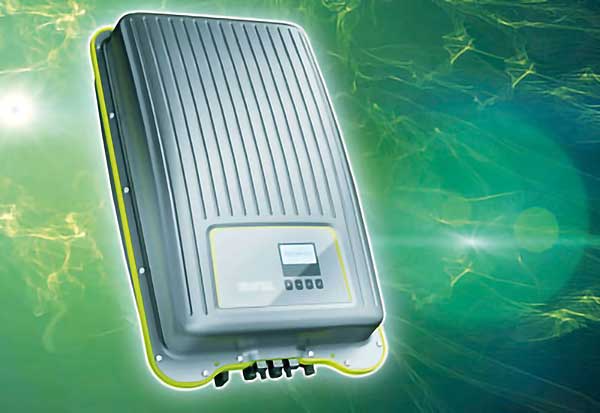 July 18.07.2018, XNUMX | After costal At Intersolar Europe presented the “Plenticore plus” hybrid inverter, it is promising a new variant as a purely AC-coupled system for 2019. Up to three batteries can then be connected to the device's three MPP trackers instead of two strings with solar modules and one battery.
July 18.07.2018, XNUMX | After costal At Intersolar Europe presented the “Plenticore plus” hybrid inverter, it is promising a new variant as a purely AC-coupled system for 2019. Up to three batteries can then be connected to the device's three MPP trackers instead of two strings with solar modules and one battery.
This corresponds to a battery capacity of approx.30 kWh, which also allows smaller commercial businesses full flexibility when building a PV system, but above all when retrofitting existing systems.
But also for private applications, to which Plenticore plus with its five performance classes between 4,2 and 10 kW, there will soon be an even greater variety. The successor generation of the “Piko MP”, the “Piko MP plus”, will be available in the three performance classes 3,0, 3,6 and 4,6 kW with two MPP trackers and can be made battery-capable using appropriate accessories.
In addition, the new single-phase PIKO MP plus With this combination, intermediate storage from AC energy sources is also possible. This makes the hybrid inverters suitable for new construction and retrofitting of smaller single-phase photovoltaic systems.
All device variants have extended country approvals and an increased protection class to IP 65 compared to the previous Piko MP.
Basics of inverter technology
An inverter is an essential part of a Photovoltaic system (PV system). It converts the direct current generated by the solar modules into alternating current and feeds it into the public power grid. But why is this so important? Because the public power grid and most household appliances are designed for alternating current. Alternating current can be transmitted efficiently over medium distances and in high-voltage networks with almost no loss.
But the function of an inverter is not limited to converting direct current into alternating current. An inverter also plays the role of Manager of the solar system. It controls and monitors the solar system and ensures that the solar modules always work at their maximum performance, depending on the irradiation and temperature. Inverters are also responsible for compliance with various safety criteria and continuously monitor the power grid.
The performance optimization is done by Maximum Power Point (MPP) tracking, which finds and continuously maintains the optimal operating point on the performance curve of the solar modules. Thanks to this technology, modern inverters achieve conversion efficiencies of around 98%. This means that almost 100% of the energy is converted from direct current to alternating current. In order to ensure this high level of efficiency, the inverter must be well protected. A weatherproof one Housing enables it to be installed outside and reduces the effort required for DCcabling.
Different types of solar inverters
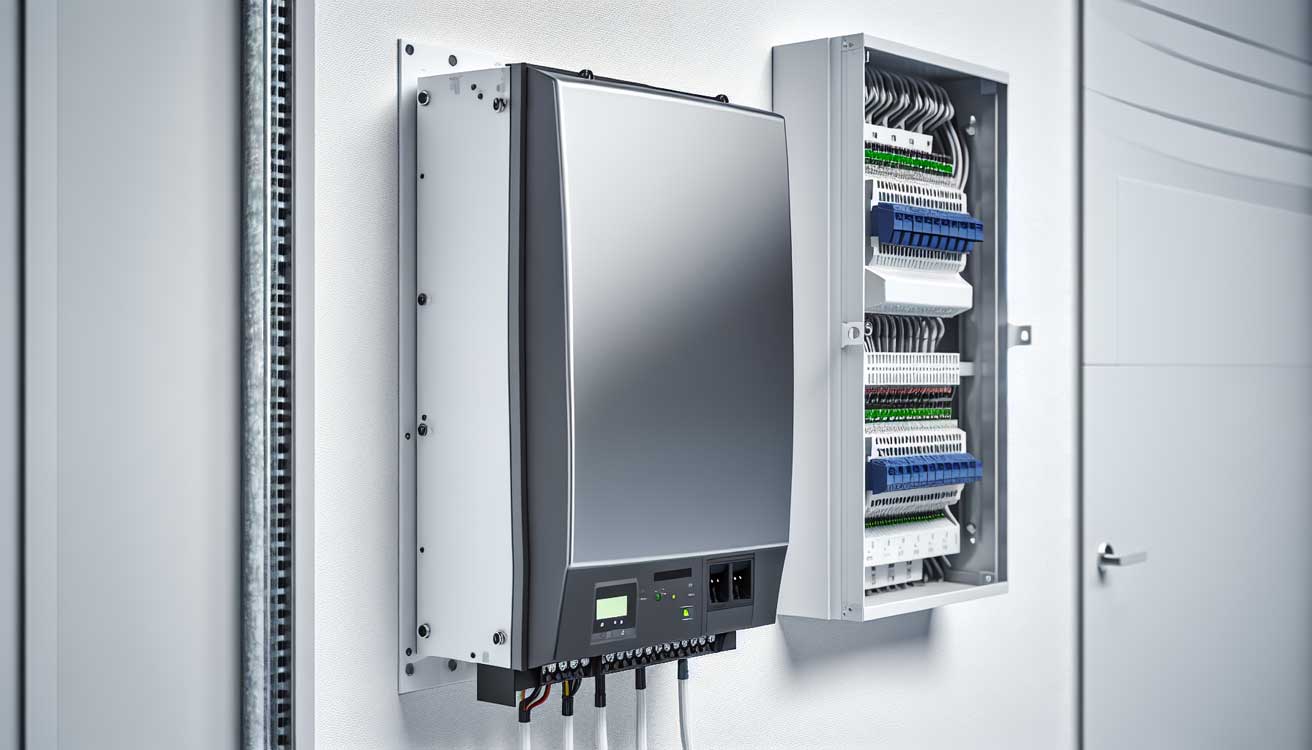
As with most technological devices, inverters come in different types. These are suitable for specific applications and vary depending on the size and requirements of the PV system. There are:
- Micro Inverters, which are particularly suitable for smaller PV systems and ensure optimized performance at the module level;
- 3 phase inverter, which are primarily used in commercial and industrial solar systems;
- central inverters, which are used in large photovoltaic systems and offer high performance for large solar parks.
To better understand the differences and special features of these types of inverters, we will discuss the three main types below: string and multistring inverters, hybrid inverters and micro inverters.
String and multistring inverters
String inverters are good for Single and two-family houses. They connect several solar modules and can thus reduce power losses on roofs with two different orientations. These inverters are particularly efficient with evenly lit and unshaded solar modules and reduce so-called mismatching losses. They are recommended for systems larger than 30 m² to maximize energy production.
On the other hand, we have multistring inverters. These are suitable for larger systems and enable the management of different module strings, especially under varying conditions. Through integrated MPP trackers for each string, they offer the opportunity to achieve the maximum possible performance. The range varies depending on the model in terms of:
- Performance areas
- Input voltages
- Input currents
- Efficiencies.
Despite the differences, string and multistring inverters also have some similarities. They are both simpler and cheaper to install and wiring, which also makes troubleshooting and maintenance easier. However, this simplicity also has a downside. If a string inverter fails, all energy production of the affected string is interrupted. Expanding the PV system can be complicated by the need to coordinate new modules.
Despite these challenges, string inverters offer high system efficiency and are particularly suitable for single-family homes and the associated households due to their relatively low purchase and maintenance costs.
hybrid inverter
Hybrid inverters are an interesting option for those who The best from both worlds seek. They combine the functions of PV/string/multistring inverters and battery inverters. This enables direct conversion of direct current into alternating current or vice versa. The optimized power electronics of hybrid inverters offer the following advantages:
- maximum power point tracking,
- the ability to track up to three MPPs,
- sophisticated energy management,
- the intelligent control of the use, storage or feed-in of electricity as well
- improving self-consumption.
Thanks to these functions, hybrid inverters can Use electricity efficiently and optimize your own consumption. Hybrid inverters are particularly suitable for:
- Solar systems with solar inverters on roofs with different orientations and shading;
- Households that rely on both photovoltaic energy generation and energy storage and
- Emergency power supplies.
The higher price and additional space required by integrated storage must be offset by the advantages of hybrid inverters, such as high Efficiencies of around 98%, Compatibility with various storage systems as well as long-term reduction in energy costs, e.g. B. be weighed in single-family homes.
micro inverter
Micro inverters, also known as micro inverters, are another useful option for solar systems. They optimize the performance of each individual solar module independently of the other modules in the system. This is especially true on a regular basis Shading of individual modules advantageous. Using Maximum Power Point Tracking (MPPT), the current-voltage characteristic curve is traced for each solar module in order to determine the point of maximum power generation.
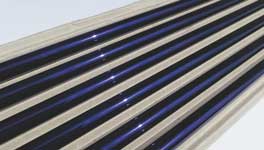 solar storage | Products, technologies, innovations and trends
solar storage | Products, technologies, innovations and trends
Microinverters are very flexible and allow for easy Installation on roofs with different orientations or dormer windows. They also enable the system to be easily expanded by adding additional modules with their own inverters. They are suitable for small to medium-sized roof systems, including balcony power plants, as well as for apartment buildings or commercial buildings with complex roof structures.
Another advantage of panel inverters is the ability to monitor and control each solar panel more easily, helping to manage the entire system more efficiently.
Selection criteria for the right PV inverter
Now that we know the different types of inverters, it is time to discuss some criteria to consider when choosing the right inverter. One of the first things to consider is that performance class an inverter. It ranges from 1,5 kW to over 10 kW and is based on the size of the photovoltaic system.
Then comes the rated capacity an inverter comes into play. It should be tailored to the actual output of the solar modules, whereby an inverter with a nominal output of 1 kVA is usually required per kWp. But it's not just performance that's important. The Efficiency of inverters is often between 95 and 98 percent, and the 'European efficiency' is a common measurement for evaluation.
Another important factor is the inverter's ability to maintain the Maximum Power Point (MPP) for optimal Power output to guarantee the solar system. String inverters with separate MPP trackers for each string input can increase solar yields by maintaining the optimal operating point of the solar modules.
Finally, the Connection of the solar modules, individually or in strings, can be a decisive criterion for selecting the right inverter. For larger solar systems, a 3-phase inverter is usually required, whereas smaller systems often require single-phase connections. Multistring inverters should be selected based on accurate measurements and calculations to ensure that the additional investment is justified.
And finally the should Integration The inverter is installed in the photovoltaic system with the help of a specialist company to ensure that the inverter meets the requirements of the entire system.
Integration into the smart home
The rapid development of smart home technology has also influenced the solar industry. Have modern inverters Communicationinterfaces, which play a central role in control and monitoring and can often be used for integration into smart home systems. Energy management functions of modern inverters can be used to optimize self-consumption, which is made possible by a home assistant. It provides insights into energy production and expected solar production.
Devices like CT clamp Sensors can be integrated into a smart home to measure the flow of electricity and thus energy production. The Shelly EM or DIY solutions such as ESP Home can be used for this. Additionally, integrating Solar Forecast into a smart home system makes it possible to plan automation operations based on forecast solar production.
Integrating inverters into smart home systems is not only a practical solution for managing energy production and usage, but also an important step towards a fully connected and energy efficient future.
Emergency power capability and island operation
In addition to generating electricity and integrating into smart home systems, inverters also have the potential to serve as backup power in emergencies. Hybrid inverters can provide continuous power to the home for several hours. They have the ability to automatically switch from mains power to battery power when on Power failure is recognized. This feature can be particularly useful in areas subject to frequent power outages or in situations where uninterrupted power is essential, such as hospitals or data centers.
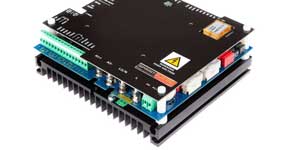 rectifier | Electronic components for direct current converters
rectifier | Electronic components for direct current converters
In addition, the so-called “island operation” allows inverters to work independently of the public grid, which is called off grid function referred to as. In this mode, they use battery storage to supply the electricity, with grid parallel operation involving cooperation with the power grid. However, in the event of a power outage, disconnection from the grid is required. Although the purchase of PV systems with emergency power functions is initially more expensive, they offer additional security and can minimize financial damage, especially for companies. It should be noted that the installation of such a system must be carried out by qualified electricians in order to avoid safety risks.
A good example of an inverter with emergency power function is SMA inverter. They offer a reliable backup function with UPS level, which gives them a special position among inverters with emergency power function.
The leading manufacturers at a glance
Since there are a variety of inverters on the market, finding the right one for your specific needs can be challenging. Choosing an inverter from one of the leading manufacturers can be a good guide. The three largest manufacturers of inverters worldwide are Huawei and Sungrow from China and SMA from Germany. Products with the label 'Made in Germany' or 'Made in Austria' are recognized for their high quality. Manufacturers such as Fronius, Growatt, Huawei, Kostal, SMA and Solaredge offer different types of hybrid inverters, showing the diversity of their product offerings.
To give you a deeper insight into the leading manufacturers, we will discuss three of them below: Fronius, SMA and Solaredge. These companies are among the most renowned manufacturers in the industry.
Fronius - pioneer and quality guarantee
Fronius is a global technology leader in the development of inverters. It has been since 1992 Solar Energy Business Unit Fronius is focused on the development of inverters and solutions for photovoltaics and is considered the global technology leader in this area. Fronius offers a wide range of products for photovoltaics, including:
- inverter,
- Storage,
- Counter,
- energy monitoring systems,
- complete system solutions.
SMA - reliability from Germany
The German company SMA is one of the world's leading manufacturers of inverters and plays a central role in the global market. Their products are known for their reliability and high performance. A good example of this is the Axitec Axihycon 10H hybrid inverter from SMA, which is characterized by up to 16 A DC input current, integrated AFCI and DC surge protection type 2 as well as backup with UPS level.
Solaredge - progress through innovation
Solaredge is another leading inverter manufacturer that stands out for its innovative Power Optimizer technology highlights. This technology offers the following advantages:
- Maximizing the energy output of each solar panel by overcoming shading and avoiding power-related clipping at the module level;
- The S-Series Power Optimizers represent the most advanced generation with integrated state-of-the-art safety features, simplified cabling and intelligent remote monitoring;
- Support for higher power solar panels for increased power density and less clipping;
- Compatibility with various panel specifications.
Solaredge also prioritizes security. SolarEdge Sense Connect is an industry-first safety feature that detects abnormal thermal events Connectors of the performance optimizer and thus improves safety and reliability. In addition, Solaredge's technology enables detailed monitoring of the energy production of each individual panel, thereby providing efficient maintenance and quick identification of problems.
Financial aspects when purchasing an inverter
Purchasing an inverter is an investment that should be carefully planned. The Cost of an inverter make up around 10 to 15% of the total costs of a photovoltaic system and vary depending on the quality and scope of services. Here are some standard prices for different types of inverters:
- Micro inverter: approx. EUR 150 per piece
- Hybrid inverter: 2000 to 4000 EUR depending on the size of the system
- Central inverter for large systems: approx. EUR 100 per kW of output
- Average price for an inverter for a private solar system of 4 to 10 kWp: 800 to 2500 EUR
Please note that this is only rough guidelines and actual costs may vary depending on the provider and individual requirements. The results may vary.
It is also important to note that as the power of the photovoltaic system increases, the absolute cost of the inverter increases specific costs per kWh however, decrease with larger systems. You should also include the installation costs for an inverter in your budget planning. These range between 500 and 1500 EUR, while a replacement costs between 50 and 150 EUR.
There is also good news for those planning to install a solar system in the near future. Since the beginning of 2023, for solar systems below 30 kWp that are installed on residential buildings, no VAT (VAT) is charged more, which also applies to inverters and battery storage, including extensions to existing systems and balcony power plants. Although dealers and tradesmen are supposed to pass on the lower VAT to customers, which makes photovoltaic systems including inverters cheaper, they are not obliged to do so and 19% VAT still applies to maintenance contracts.
Frequently asked questions
How much does a good inverter cost?
The cost of a high-quality inverter varies depending on power capacity, technology and manufacturer. For private photovoltaic systems The prices are usually between 800 and 2.500 euros.
For commercial or industrial applications that require more powerful inverters, costs can be significantly higher. It is crucial to select an inverter that meets the specific requirements of your solar system to ensure optimal energy efficiency.
When do you need an inverter?
An inverter is needed to convert the energy generated by solar systems Direct current into usable alternating current that can be used in households. It is an indispensable component for a photovoltaic system and enables it to be fed into the public power grid and to use solar power in the household.
How big does the inverter have to be for a PV system?
The inverter of a PV system should be approximately the same as: rated capacity of the solar modules, typically an inverter with a nominal output of 1 kVA per kWp of installed power.
Source: This article is based on information from the following companies: Growatt, Kostal, SMA, Solaredge.
You might also be interested in...
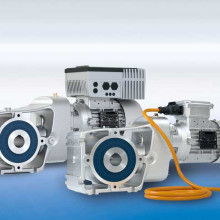
Decentralized drive technology for the digital factory of the future

Jens Struck is a business owner, journalist and web designer at German Online Publisher GbR in Ried.
